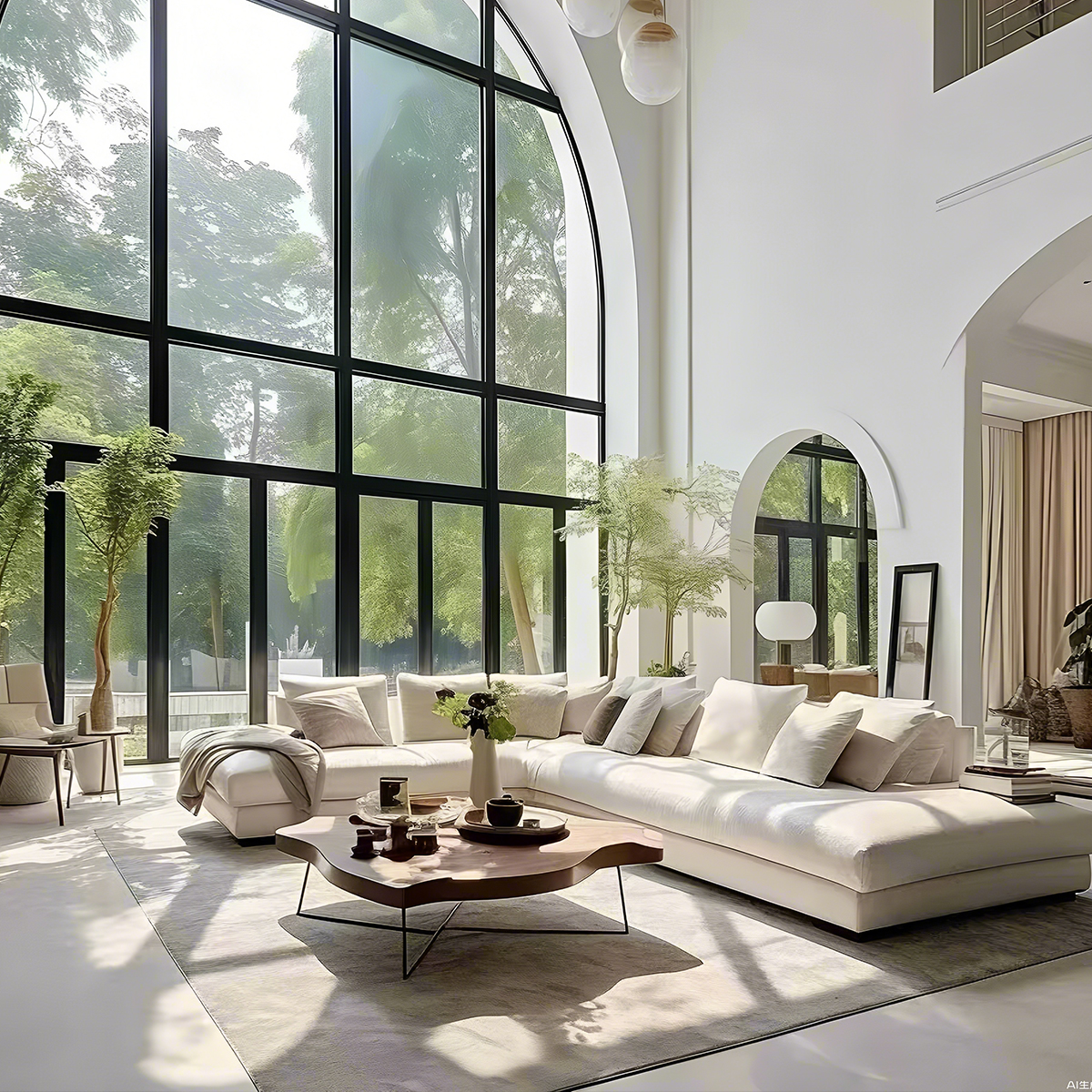In architecture and interior design, natural light is not only an energy-saving and environmentally friendly light source, but also a key element to improve the comfort and quality of space. Doors and windows are important media for the interaction between buildings and external light, and their design directly affects the effect of introducing natural light. Mastering scientific door and window lighting design techniques can make the space glow with unique charm and vitality under the infiltration of natural light.
Choice of door and window types: Adapt to different lighting needs
Different types of doors and windows have their own advantages and disadvantages in lighting performance. Reasonable selection is the basis for maximizing the use of natural light. With a large area of glass material, floor-to-ceiling windows can almost bring outdoor light into the room without reservation, which is particularly suitable for living rooms, bedrooms and other spaces that require sufficient lighting. In high-rise residential buildings, floor-to-ceiling windows allow sunlight to pour in, while providing a wide field of vision, making the interior space appear more transparent and bright.
Sliding windows and folding windows enhance the adjustability of lighting with flexible opening methods. When the window sash is fully opened, it is equivalent to widening the lighting surface, allowing more light to enter the room; when closed, the large area of glass can also ensure good light transmittance. This type of door and window is often used to separate the balcony from the interior, which can not only bring in sufficient light, but also facilitate the opening of space when needed to create an open lighting environment.
The design of the skylight provides a new perspective for lighting. The skylight installed on the roof can capture light from different angles, especially suitable for spaces with poor lighting conditions such as attics and basements. During the day, the skylight brings sunlight into the room, breaking the darkness and depression of the space; at night, the skylight becomes an excellent window for viewing the stars, adding a romantic atmosphere to the space.

Size and proportion design: optimize lighting effect
The size and proportion of doors and windows have a significant impact on the lighting effect. When designing, the size of doors and windows should be reasonably determined according to the function and area of the room. For smaller rooms, the area of doors and windows can be appropriately increased to improve lighting efficiency, but care should be taken to avoid indoor heat loss or privacy leakage due to excessive doors and windows. For example, a large window with a width that is in proportion to the wall can be installed in the children's room, which can not only ensure sufficient lighting, but also create a bright and lively growth environment for children.
The height-to-width ratio of doors and windows will also affect the distribution of light. Doors and windows that are taller vertically can introduce more vertical light, making the space appear tall; doors and windows that are wider horizontally focus on horizontal lighting, which is suitable for creating a spacious and open visual effect. In addition, the use of frameless or narrow frame design can reduce the light blocking of the window frame, further increase the amount of light, and allow natural light to flow freely indoors.

Installation position and orientation: Accurately capture light
The installation position and orientation of doors and windows directly determine the length and intensity of natural light that can be obtained. In residential design, south-facing doors and windows can get the longest sunshine in a day, which is suitable for arranging main living spaces such as living rooms and bedrooms. Doors and windows facing east can welcome the first rays of sunshine in the morning, which is suitable as lighting windows for kitchens or restaurants, injecting vitality into daily life.
For irregular apartment types or those blocked by surrounding buildings, the lighting can be improved by cleverly designing the position of doors and windows. For example, corner windows can be set on adjacent walls to expand the lighting area and allow light to enter the room from multiple angles; side windows can be set in corridors or aisles to introduce indirect light and improve the lighting conditions in dim areas. At the same time, the placement of doors, windows and indoor furniture should be reasonably planned to avoid furniture blocking light and ensure that natural light can fully illuminate every corner.

Auxiliary design: Enhance lighting effect
In addition to the design of doors and windows themselves, some auxiliary means can also effectively enhance the lighting effect. Choosing light-colored walls and ceilings can reflect more light and increase the brightness of the room; using decorative elements made of reflective materials such as mirrors and metals, such as mirrors, stainless steel ornaments, etc., can refract light to every corner of the space, which can expand the space and enhance lighting.
In the selection of sunshade facilities such as curtains and blinds, lighting needs should also be taken into account. The use of thin and light-transmitting gauze curtains can filter out the dazzling sunlight and ensure that the light enters the room softly; the blinds with adjustable angles can flexibly control the amount and direction of light entering according to the intensity of light and personal needs, so as to achieve a balance between lighting and privacy protection.
Door, window and lighting design is an art that combines aesthetics and functionality. By rationally selecting door and window types, optimizing size ratios, accurately planning installation locations, and using clever auxiliary designs, we can maximize the use of natural light, give the space warmth, brightness and vitality, and allow people to enjoy a high-quality life in a comfortable light environment.








